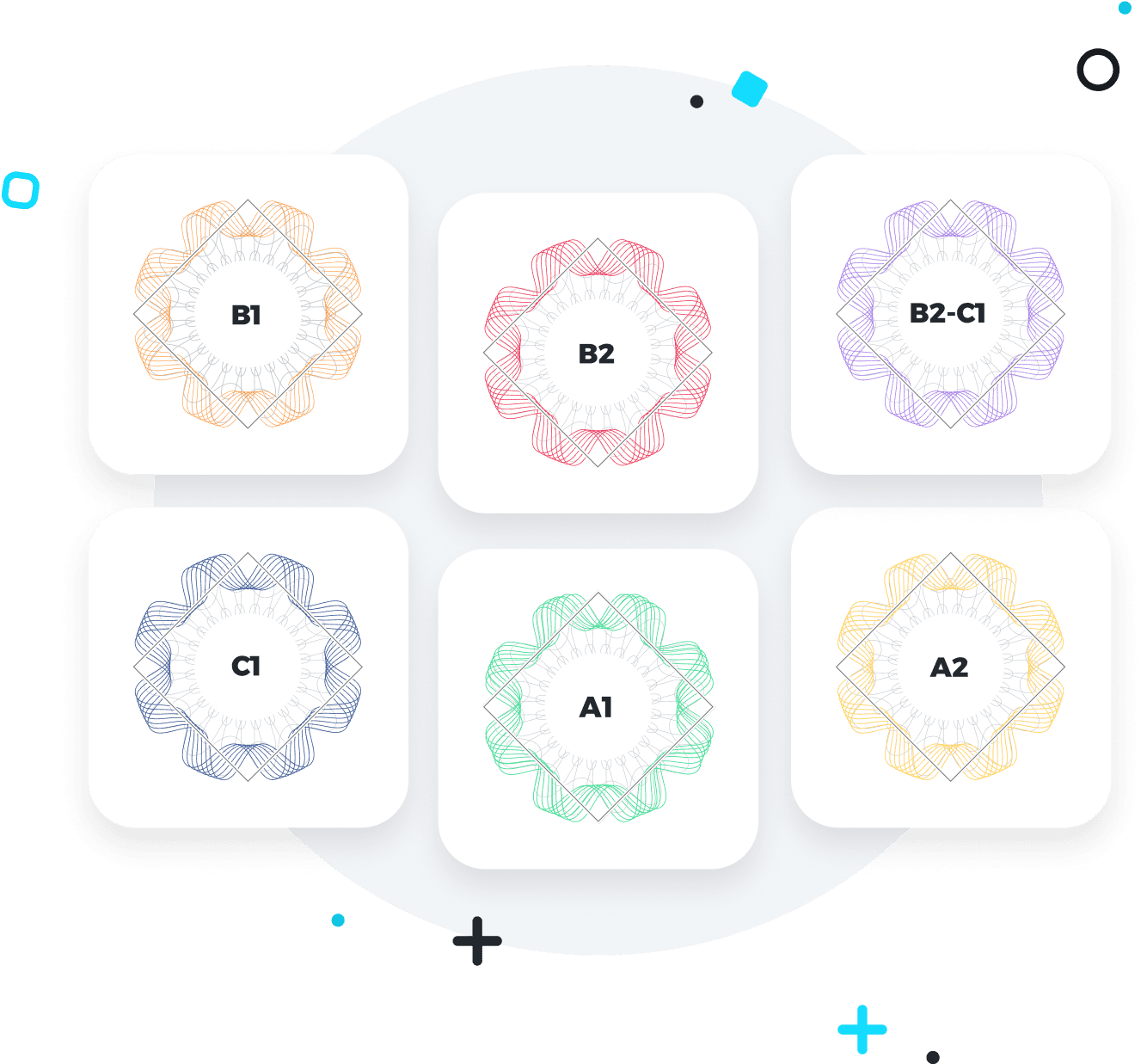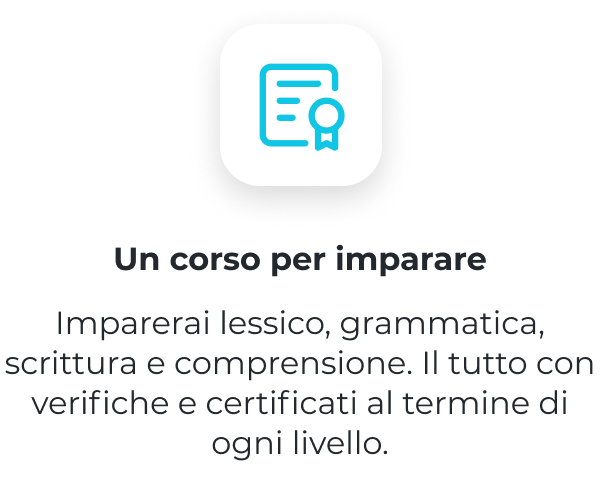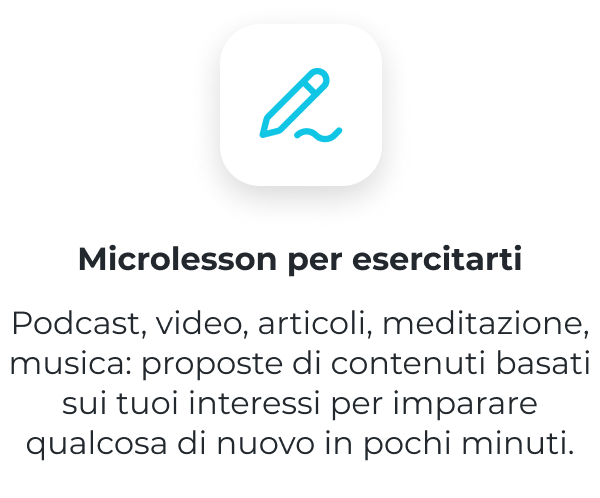Present perfect continuous in inglese
Impara tutto ciò che riguarda il present perfect continuous e perfeziona la lingua con esempi ed esercizi. Registrati gratis ad ABA English e goditi ogni giorno una nuova video lezione di grammatica gratuita
Scopri la struttura e quando si usa il present perfect continuous con esempi ed esercizi, nonché le differenze tra il present perfect progressive e il present progressive.
Cos’è il present perfect continuous?
Il present perfect continuous è il tempo verbale inglese con il quale effettuiamo una transizione dal passato al presente.
Quando si usa el present perfect progressive?
In generale, utilizziamo il present perfect continuous per descrivere situazioni in cui la cosa più importante è la durata dell’attività.
Per raccontare azioni iniziate nel passato
Usiamo il present perfect continuous per narrare situazioni o azioni che sono iniziate nel passato e continuano a svolgersi nel presente di chi parla.
Esempi:
- My mother has been calling me all afternoon. (Mia madre mi ha chiamato tutto il pomeriggio.)
- Trevor has been working in the same company since he graduated. (Trevor lavora nella stessa azienda da quando si è laureato.)
Per raccontare eventi che si sono conclusi di recente
Usiamo anche il present perfect continuous per parlare di eventi che sono appena terminati pochi istanti fa.
Esempi:
- The road is still wet because it has been raining. (La strada è ancora bagnata perché ha piovuto.)
- My head hurts, I have been reading all day. (Mi fa male la testa, ho letto tutto il giorno.)
+30 MILIONI DI STUDENTI
Unisciti all’accademia digitale d’inglese più
grande del mondo e impara l’inglese
Struttura del present perfect continuous
La struttura delle frasi al present perfect progressive utilizza il verbo ausiliare to have al presente insieme al participio del verbo to be, seguito dal verbo al gerundio per indicare la continuità dell’azione.
Present perfect continuous in frasi affermative
Nel caso di frasi affermative al present perfect continuous, indichiamo il soggetto seguito dalla costruzione have/has been, il verbo al gerundio, ed infine il complemento oggetto della frase. La struttura sarebbe la seguente:
Soggetto + have/has been + verbo(ing) + complemento
Esempi:
- I have been feeling sick for a week. (Sto male da una settimana.)
- Carlos and Frankie have been planning these vacations for months. (Carlos e Frankie pianificano questa vacanza da mesi.)
Present perfect progressive in frasi negative
Per formare frasi negative al present perfect continuous, la negazione ricade sul verbo ausiliare to have nella coniugazione corretta, come si mostra nella seguente struttura:
Soggetto + have/has not (haven’t/hasn’t) been + verbo(ing) + complemento
Esempi:
- You haven’t been paying attention in class. (Non hai prestato attenzione in classe.)
- Dolores hasn’t been doing her chores. (Dolores non ha fatto i compiti.)
Present perfect continuous in frasi interrogative
Le frasi interrogative al present perfect continuous si formano mettendo il soggetto tra l’ausiliare to have e il participio del verbo to be. Se la domanda è in forma negativa, la negazione ricade sull’ausiliare to have. Quindi, la struttura della frase è la seguente:
Have/has (haven’t/hasn’t) + soggetto + been + verbo(ing) + complemento
Esempi:
- Have you been listening to me? (Mi hai ascoltato?)
- Hasn’t the lawyer been investigating the case? (L’avvocato non ha indagato sul caso?)
Sai già qual è il tuo livello d’inglese?
Fai subito un test
Registrati nella nostra pagina e accedi gratuitamente al test di livello. Scoprirai il tuo punto di partenza in pochi minuti e potrai continuare ad avanzare con il corso.

Differenza tra il present perfect continuous e il present continuous
Si può fare un po’ di confusione tra il present perfect continuous e il present continuous, poiché in entrambi i casi si tratta di situazioni che continuano a svilupparsi nel presente.
Tuttavia, la differenza è che nel present continuous non è rilevante quando è iniziata l’azione o da quanto tempo dura, mentre nel present perfect continuous si riferisce ad azioni che vanno dal passato al presente di chi parla, e durano ancora.
Vediamolo in un confronto diretto con esempi:
| Tempo Verbale | Struttura | Esempio |
| Present perfect continuous | Soggetto + have/has been + verbo(ing) + complemento | I have been playing piano. (Ho suonato il piano.) |
| Present perfect | Soggetto + to be + verbo(ing) + complemento | I am playing the piano. (Sto suonando il piano.) |
Frasi ed esempi
- It has been raining a lot lately. (Sta piovendo molto ultimamente.)
- My eyes have been hurting these days. (In questi giorni mi hanno fatto male gli occhi.)
- Paula hasn’t been attending school. (Paula non ha frequentato la scuola.)
- Their teachers haven’t been correcting them as often. (I loro insegnanti non li hanno corretti così spesso.)
- Have you been hiding something from me? (Mi hai nascosto qualcosa?)
- Has he been checking his blood sugar properly? (Hai controllato correttamente il livello di zucchero nel sangue?)
Esercizi con present perfect continuous
Esercizi con frasi affermative
Usa la coniugazione corretta del verbo indicato tra parentesi per formare frasi al present perfect continuous.
- I’m tired, I ____________ (work) all day.
- Celine _____________ (rescue) cats and dogs from the streets.
- My friends and I ___________ (wait) for the new Thor movie.
- You ____________ (call) me a lot lately.
- The president ____________ (travel) across Europe for the past two weeks.
Risposte:
- has been working.
- has been rescuing.
- have been waiting.
- have been calling.
- has been traveling.
Esercizi con frasi negative
Usa i verbi tra parentesi per comporre frasi al present perfect continuous.
- I ____________ (sleep) very well for the past few nights.
- We need a new computer; the old one ___________ (work) properly lately.
- Ivan ____________ (contact) his mother as often as he should.
- You ____________ (try) hard enough for this promotion.
- Meghan ___________ (feel) since her surgery.
Risposte:
- haven’t been sleeping.
- hasn’t been working.
- hasn’t been contacting.
- haven’t been trying.
- hasn’t been feeling.
Esercizi con frasi interrogative
Forma frasi al present perfect continuous usando le parole fornite di seguito.
- Saul / grow / his own vegetables.
- Molly and Frank / plan / their wedding.
- You / not see / a therapist.
- Sally / work out.
- The council /not debate / the city budget.
Risposte:
- Has Saul been growing his own vegetables?
- Have Molly and Frank been planning their wedding?
- Haven’t you been seeing a therapist?
- Has Sally been working out?
- Hasn´t the council been debating the city budget?
Altri link utili


























